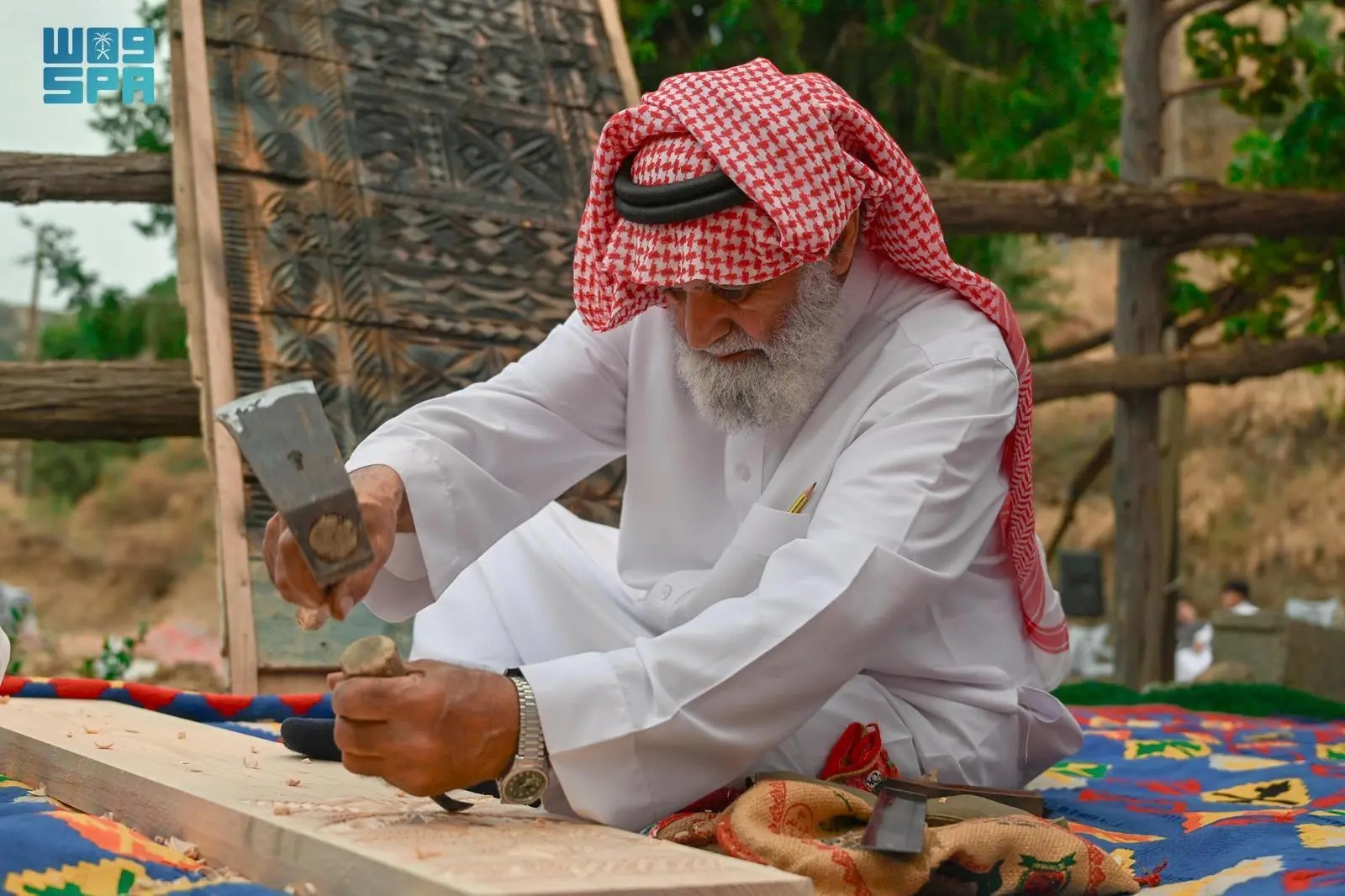
Carpentry in Al-Baha Region Encompasses Heritage and Creativity
"A trade in hand ensures against poverty" is a longstanding saying in Al-Baha region, mostly used by forefathers who have worked as carpenters, taking advantage of the diversity of trees in the area that lend themselves to their craft, such as juniper, sweet acacia, sidr, patch and neem.
The region has a rich heritage of handicrafts and industries, which form an important part of its cultural identity and are passed down from generation to generation.
The locals are seeking to develop and modernize these crafts to keep pace with today's challenges. Mohammed Al-Zahrani, a carpenter in his eighties, told SPA: "Carpentry is a difficult and tiring profession, as it requires a lot of time and effort. It starts by getting the wood, which is usually from sidr and sweet acacia trees scattered in the mountains and valleys of Al-Baha, and then the bark is peeled and the wood is dried, after which the carpenter will cut and engrave according to employers' demand."
Al-Zahrani said that in the course of his work, he engraved and decorated the wood with beautiful geometric shapes, either simple and common or original and unique, and stressed that carpentry was his source of livelihood. He also said that he did not practice this profession for decades, except to introduce his children and grandchildren to it.
Al-Zahrani participated in the Social Activity Center in the village of Wadi Al-Arja in Bani Hassan Governorate with a display of wood engravings to show how the ancestors used to work in the past.








